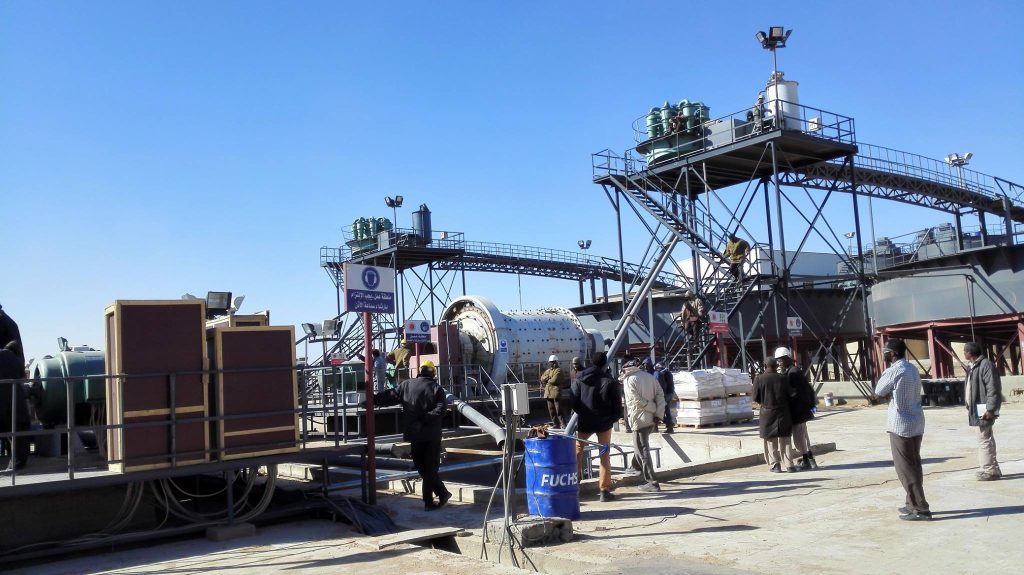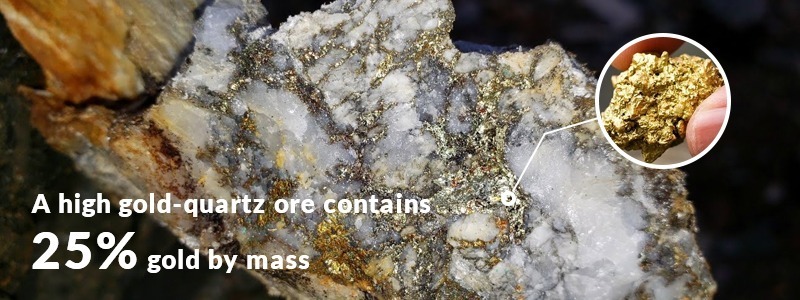Gold has always been one of the most popular metals in the world, sought after by gold mining companies, mineral experts, and amateur gold prospectors due to the crazy gold rush.
Approximately 70%-75% of gold deposits are natural gold, with 20% being Au-Ag telluride. The remaining 5%-10% is “invisible” gold ore that is symbiotic with quartz ore, silver ore, pyrite, pyrrhotite, sphalerite, gangue minerals such as arsenopyrite.
Introduction to Gold Ore
The Witwatersrand Basin in South Africa holds the world’s largest placer gold deposit. In Brazil, there are gold ores that coexist with diamonds. In Australia, wherever pyrites can be found there is also presence of gold. So how do we extract gold from different types of ores?
- Quartz Gold Ore
Properties of Quartz Gold Ore
Gold has long been found in fractures and cracks within quartz stone and can occur in large veins during hard rock mining. Gold from quartz veins is one of the rarest forms of natural occurring gold.
Quartz appears as small stones within large cracks on riverbeds or mountain slopes and comes in various colors such as white, yellow, pink purple gray or black.
Quartz Gold Ore
The most common types of quartz-gold ores are rose quartz-gold ore and rainbow quartz-gold ore. A high-grade quartz-gold ore contains 25% mass fraction of pure gold and occurs in areas where bedrock has undergone tectonic activity or volcanic activity causing fracturing.
Extraction Process for Gold from Quartz Ore
Once you find a vein containing gold within a piece of quartz ore you can extract it using these steps:
1.Use a crusher specifically designed for crushing raw pieces into smaller fragments.
2.Grind the rock into fine particles using a wet pan mill while adding water; then sieve out and collect the gold.
3.Utilize standard placer gold washing methods to separate small nuggets and powder from the ground rock using a shaker table.
4.Recover gold from tailings by employing a flotation machine to obtain high-grade gold ore concentrate.
- Silver-Gold Ore
Properties of Silver-Gold Ore
Silver-gold ore is rich in silver sulfide and free gold. High-grade silver ores usually have lower base metal content. Superheated deposits of gold and silver are formed through volcanic activity accompanying plate subduction.
For example, most superheated deposits in Japan form through the precipitation of gold from fountains.


Silver-Gold Ore
Extraction Method for Silver-Gold Ore
1.Grind bulk silver-rich gold ore into finer particles using a ball mill.
2.Leach the flotation tailings.
3.Extract both gold and silver using cyanidation.
- Iron Oxide Copper Gold (IOCG) Ore
Properties of IOCG Ore
Iron oxide copper-gold ore refers to the symbiotic occurrence of copper and gold within an iron oxide matrix. The amount ranges between 10 million to 4 billion tons. IOCG ores contain copper with grades ranging from 0.2% to 5% and gold with contents ranging from 0.1 grams per ton to 1.41 grams per ton.
IOCG ores tend to appear conical on granite edges or as long banded breccia or massive iron oxide ores within faults or shears.
Iron Oxide Copper Gold (IOCG) Ore
Extraction Process for Gold from Copper Ores
1.Crush, grind, and classify raw oxidized copper-containing IOCG ore.
2.Treat the ore with an alkaline solution.
3.Add chelating agents along with sodium cyanide to inhibit leaching of copper while selectively leaching out the desired amount of gold.
4.Use conventional activated carbon in the leachate to adsorb gold.


- Gold Sulfide Ore
Properties of Gold Sulfide Ore
Gold sulfide ore is a type of rock gold ore with the chemical formula Au2S. It is the principal sulfide of gold, usually in the form of pyrite, and decomposes into elemental sulfur and gold metal, showcasing the “nobility” of gold.
In nature, the covalent radii of gold sulfide and silver are similar, leading to their formation as solid solutions.
Gold Sulfide Ore
Extraction Method for Gold Sulfide Ore
1.Grind large pieces of gold sulfide ore into smaller particles.
2.Use a jig to recover both coarse and fine free gold.
3.Separate the ore in a flotation plant before sending it to a cyanidation plant for further recovery.
- Blue Clay Gold Ore
Properties of Blue Clay Gold Ore
Blue clay-gold ores generally contain small amounts of quartz, large amounts of gold, and significant quantities black sand. This type of ore is easily identifiable.
If blue clay contains abundant black sand, it may indicate that nearby there is also an abundance


